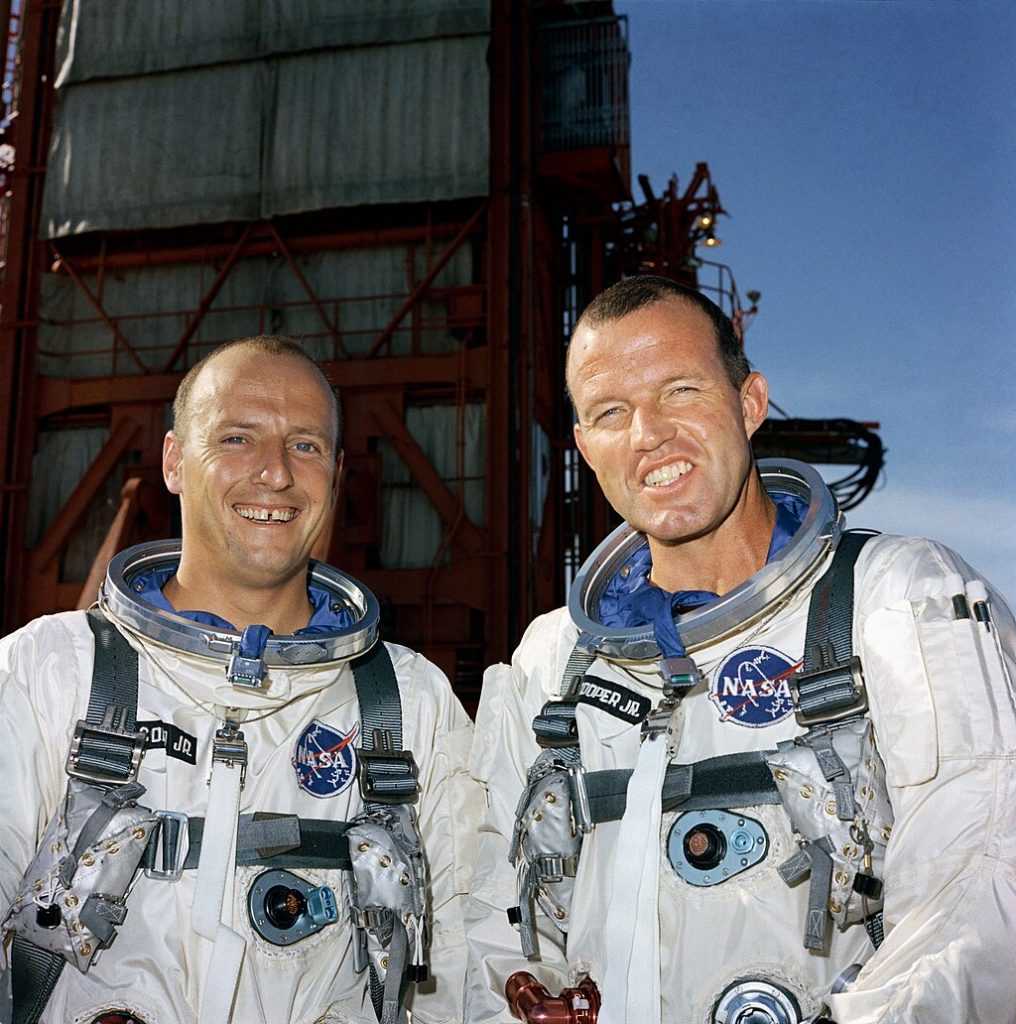Gemini 5
Alan’s TTIM Stories #30
“Endurance is not just the ability to bear a hard thing, but to turn it into glory.”
William Barclay
Betsy hurried the landing. Before the aforementioned hurricane approached the recovery area, Gemini 5 splashed down on August 29, 1965, 80 miles from the aircraft carrier USS Lake Champlain. A future moon adventure became closer to reality.
With the recent passing of the 55th anniversary of the Moon Landing, we remember famous space flights by Shepherd, Glenn, and Armstrong. In between, lesser known space flights became important steps toward the “giant leap for mankind.” Without reminders, significant events are in danger of being forgotten. Mechanics, technology, navigation, astronomy, and physics are incorporated in space exploration. One of the tests of both the Mercury and Gemini flights was human endurance.
Gordon Cooper took his second trip to space aboard Gemini 5. He piloted the last Mercury space mission to become the first astronaut to spend an entire day circling the earth. Cooper sat in a capsule smaller than a Mini Cooper car (irony noted), with little ability to move. Training, experience, courage, and a laid-back persona allowed for above-earth records.
Until the Soviets and the United States launched humans away from the earth, the effects on the body and mind were based on scientific theories with a dog and a chimpanzee delivering some data. Considerations included weightlessness, a pressurized environment, radiation exposure, ability for normal bodily functions in a confined area, muscle atrophy, plus the mental challenges of isolationism and claustrophobia.
The Atlas rocket launched Gemini 5 from the Kennedy Space Center on August 21st, with Cooper (photo right) and Charles “Pete” Conrad (photo left). A flight hidden in history did not take away from the importance of the mission. The crew delt with rendezvous practice, the use of new fuel cells (a mechanical endurance test), photography experiments, and dealing with thruster problems.
The seven-day mission proved that astronauts could survive in space long enough to reach the moon and return. If our national ambitions are to be realized, we’ll go from a 15-minute suborbital flight in 1961 to a nine month mission to Mars in the 2030’s.
Cooper continued with NASA in the Apollo program. After being passed by for several assignments, he retired. Pete Conrad became the third person to step on the moon as commander of Apollo 12.
Remember Gemini 5, Cooper, and Conrad for contributions to the space program and inspiration for us. Endurance: scientifically tested for space travel; an ability for us to greet tomorrow with enthusiasm.
Sources:
NASA (information and photo credit)
Wikipedia

___________________________
Follow announcements of
Alan’s TTIM Stories on
Facebook.com/alan.vandervoort
or Instagram & Treads
vandervoort_author.
All posts are available at
www.alanvandervoort.com.
Novels by the author include:
Sandhills – A Novel and
Key Largo Summer are found at
Booklocker.com and other online
booksellers.
Leave a Reply